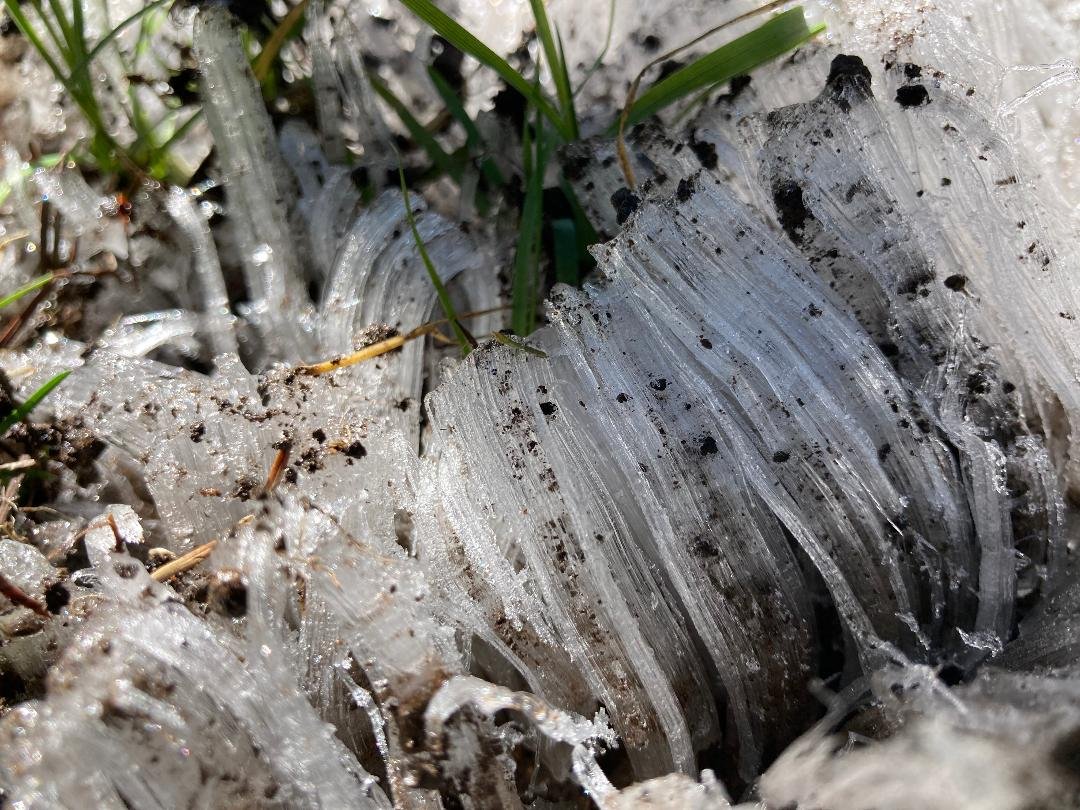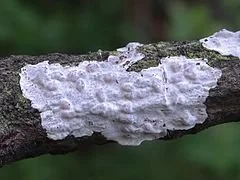by Kim Maley, Park Interpreter
Don’t let freezing temperatures stop you from exploring the great outdoors! Not only is it less crowded on your favorite hiking trails, but there are cool things to see exclusive to this time of year. (pun intended)
Frozen Treats
You may have observed these interesting items on cold mornings. And you may have asked the three questions all humans seem to ask:
What is it?
What is it made from?
Can I eat it?
Needle Ice
Sometimes called Ice Castles or Ice Ribbons
Needle Ice is formed when conditions are just right for some cool sciency processes to happen. Silty soil with sufficient moisture is the starting point.
When the temperature below ground is above freezing and the temperature above ground is below freezing, moisture is drawn to the surface through capillary action. Basically, capillary action is the movement of water without assistance. Think of what happens when you put water on the edge of a paper towel. The water “seeps” into the paper towel through capillary action. The properties responsible for this are cohesion (water is attracted to water) and adhesion (water is attracted to other substances).
Water in the soil that reaches the surface meets the below-freezing temperature and becomes ice. As more water pushes to the surfaces, the existing ice is pushed upward. The effect is tiny geometric needle-like columns of ice!
Hair Ice
The second icy item pictured looks like it could be cotton candy, cobwebs, a tuft of fur, or a really ugly wig. It is none of those, but rather it is a quirky thing nature does when freezing temperatures, dead wood, and a certain kind of fungus are in the same place at the same time.
Exidiopsis effusa is found on dead wood
Similar to Needle Ice, moisture and temperature conditions and scientific processes result in unique ice formations. With Hair Ice, however, the process happens on wood colonized with fungus Exidiopsis effusa and produces a different appearance.
Moisture drawn to the surface of the wood through capillary action freezes when it comes in contact with the colder air temperature. When no fungus is present, the ice simply forms a crust over the branch. But fungus has a recrystallisation inhibitor (as discovered by scientist D. Hofmann; Evidence for biological shaping of hair ice. Biogeosciences, 2015) that change the production of ice crystals to ice filaments.








